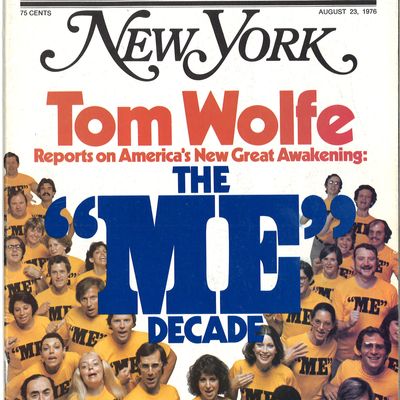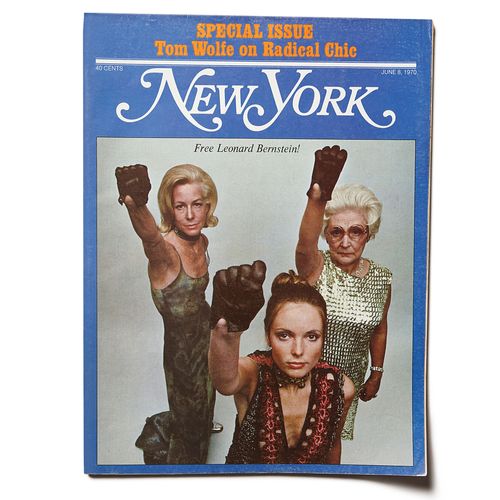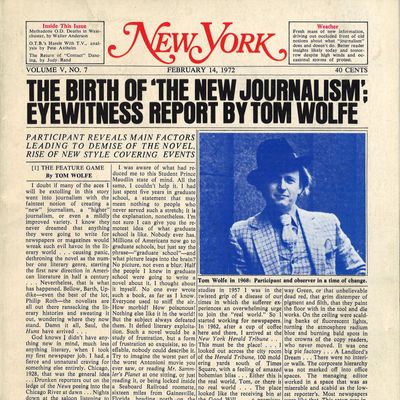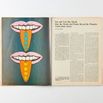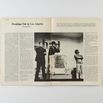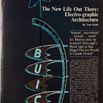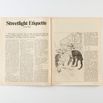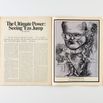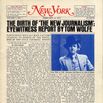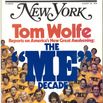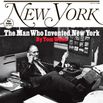Tom Wolfe was a contributing editor to New York from its first issue in 1968 through the end of 1976 and an occasional contributor for the rest of his life. His remarkable skills as a reporter, paired with a showy writer’s voice marked by elaborate punctuation and zingy, vernacular, often hilarious language, made him one of the most distinctive creators of the so-called New Journalism of the 1960s and ’70s. His writerly interests lay in the examination and codification of cultural status symbols, especially in America.
Born in 1930 in Virginia, he received a doctorate in American studies from Yale and established his career as a newspaper reporter in the early 1960s at the New York Herald Tribune. (He stood out there partly for his talent but also because of his custom-made white suits.) There, he met Clay Felker, who was revamping the paper’s Sunday magazine and was looking around the newsroom for writers. From 1963 to 1967, Wolfe published regularly in that magazine, called New York, notably writing about the ossified culture of The New Yorker and the art collectors Bob and Ethel Scull. After the Trib went out of business, he helped Felker to launch the stand-alone weekly whose website you are now reading.
In New York’s pages, Wolfe published some of the most influential, witty, perceptive magazine writing of the era, including “Radical Chic: That Party at Lenny’s” and “The ‘Me’ Decade and the Third Great Awakening.” Starting in the 1980s, he focused principally on his fiction, most notably The Bonfire of the Vanities (1987), his gargantuan novel about the clash of money and race and politics in New York City. His final story for New York, an appreciation of the photographer Marie Cosindas, appeared less than a year before his death in May 2018.
